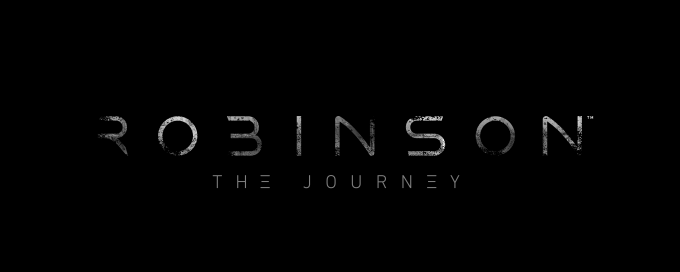
One of the biggest complaints at the launch of the Playstation VR was the lack of games that felt like full retail products. Crytek is looking to solve that problem with Robinson: The Journey, a sci-fi exploration problem solving game set in a world of dinosaurs.
Players assume the role of Robin, a young boy who survived the destruction of a human colony ship that met its untimely demise under mysterious circumstances. In addition to attempting to survive, Robin tries to make contact with other potential survivors while also putting together the puzzle of what happened to the ship. Assisting Robin is a HIGS unit, a robotic human assistance drone. HIGS is essentially a flying encyclopedia teaching Robin about his new world and how to survive in it. HIGS also gives Robin someone to communicate with, playing the perfect overly concerned parental figure to Robin’s youthful and reckless curiosity. Joining the two is Laika, a baby T-Rex Robin finds abandoned shortly after crashing on the planet. Laika is a loyal pet who has been trained to listen to the player’s instructions, like fetching objects or roaring at the occasional dino that needs spooked off. The three set off to look for other HIGS units after discovering a damaged one that contained information about the colony ship’s destruction and the potential of other people who may have made it off.
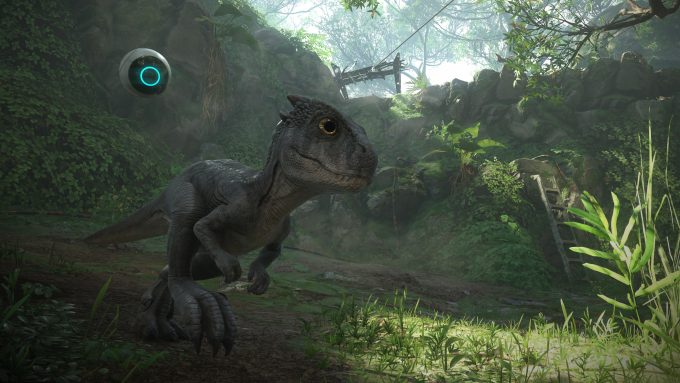
Unfortunately save for a few genuinely heartfelt interactions between Robin and HIGS, the story is very flat and predictable. Players who explore and find more background story elements other than the main ones will likely be capable of figuring out the main story element long before the mainline even hints at it. HIGS also seems overly ambitious sometimes in telling you what you should do, while other times remains completely silent. This set up a few instances where the game gave no clear indication where to go or what to interact with.
So what about the VR?
Robinson: The Journey is played in first person and controlled exactly like any other game in first person in VR. However if you have experience in VR you might be aware that this is almost always prone to causing motion sickness. That does happen here causing me to end my first two play sessions earlier than I would’ve liked, however after that I got used to the experience and only felt a little weird one other time after a sort of on rails moment took control of my movement away from me. Crytek made some smart decisions designing around the first person problem by making forward movement go in the direction that the player is looking in rather than what their characters body might be facing. Rotating center is also done in a way that moves the view like the hands on a clock, eliminating the quick lateral movement which seems to be the worst perpetrator of nausea. Additionally the gameplay is broken up into enough stopping points that needing to leave never feels like cheating yourself out of fun. Some people still won’t find comfort with these modifications and it’s up to a consumer’s knowledge of their own limits when it comes to the experience.
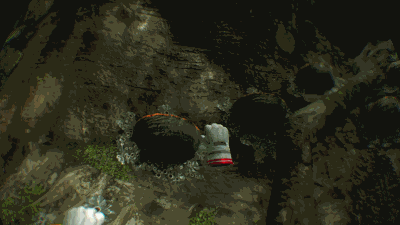
Climbing is an important part of traversing the environment and towards the end of the game gives players the ‘holy shit I might actually be in danger’ feeling that some players might be looking for in VR. Areas players can climb are usually marked in orange and yellow that are visible from a ways off. Climbing itself is pretty straightforward, the triggers work as your left and right hands so players can clamp one hand on a rock reach over and grab the next rock with their other hand. Occasionally however the game seems unwilling to let you grab onto the next rock, causing your hand to float over that rock just grabbing at it with no results. This is often fixed by moving the placement of the first hand, but not always in a way that makes sense. You might have to move your grip further away from the next rock or switch hands and cross the further hand over to grab it. It’s not a huge deal and you will often figure it out in under a minute, but it does cause a ‘oh yeah I am playing a game that sometime has dumb video game problems’ moment which isn’t something you want to run into in a VR game.
Players interact with objects and animals in the environment manipulating them to solve puzzles. This is done by using a gravity gun/scanner that Robin holds in his hand. Manipulating objects is easy and straightforward, often assisting the player in the precise placement of objects with an outline of where it is supposed to go and a sort of snap to feature. Scanning animals and some objects offer players a chance to learn more about them and manipulate it’s 3D models in a Infotarium. The Infotarium is one of the coolest aspects of the game, allowing you to get up close and see some of the amazing detail that went into creating these creatures for VR.
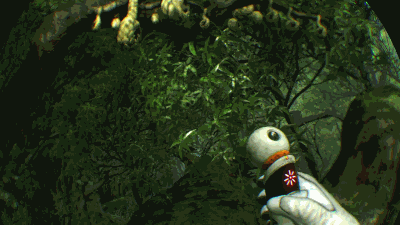
Those familiar with Playstation VR might be aware of the shaky tracking that occasionally rears its ugly head in unfavorable ways. Robinson: The Journey seems to sidestep these problems by not relying on whatever functions cause these problems for the majority of the gameplay. However there are a few moments in the game where players take control of Robin’s HIGS unit, giving them a bird’s eye view of the environment to solve a puzzle. These puzzles utilize that form of tracking and can be almost unplayable when it occurs. It’s incredibly jarring to to be having a normal experience just to get to one of those moments and be instantly thrown out of any form of immersion because the game refuses to work.
Robinson: The Journey is a weird package. It certainly feels like a complete game with a narrative through line and different environments and set pieces for the player to explore. But looking back through all gameplay interactions, it essentially establishes three or four different things and has the player cycling through them. Technically every game ever created does the same in some respect, it’s just going to be hard for VR games to break the cycle of feeling like cool mini games slapped into a full experience. There is plenty to like here though. The game’s world is fleshed out and detailed, encouraging exploration and play beyond what it takes you to do. If you’re a fan of prehistoric creatures, walking among them feels surreal and the Infotarium is a great, informative way to expose someone to them in a way that only VR is capable of. Robinson: The Journey doesn’t quite hit the mark of feeling like a big triple-A title some people might be looking for, but it’s fun and engaging in a way that’s only possible in VR.
Robinson: The Journey was reviewed on a Playstation4 with a retail code provided by the developer Crytek.

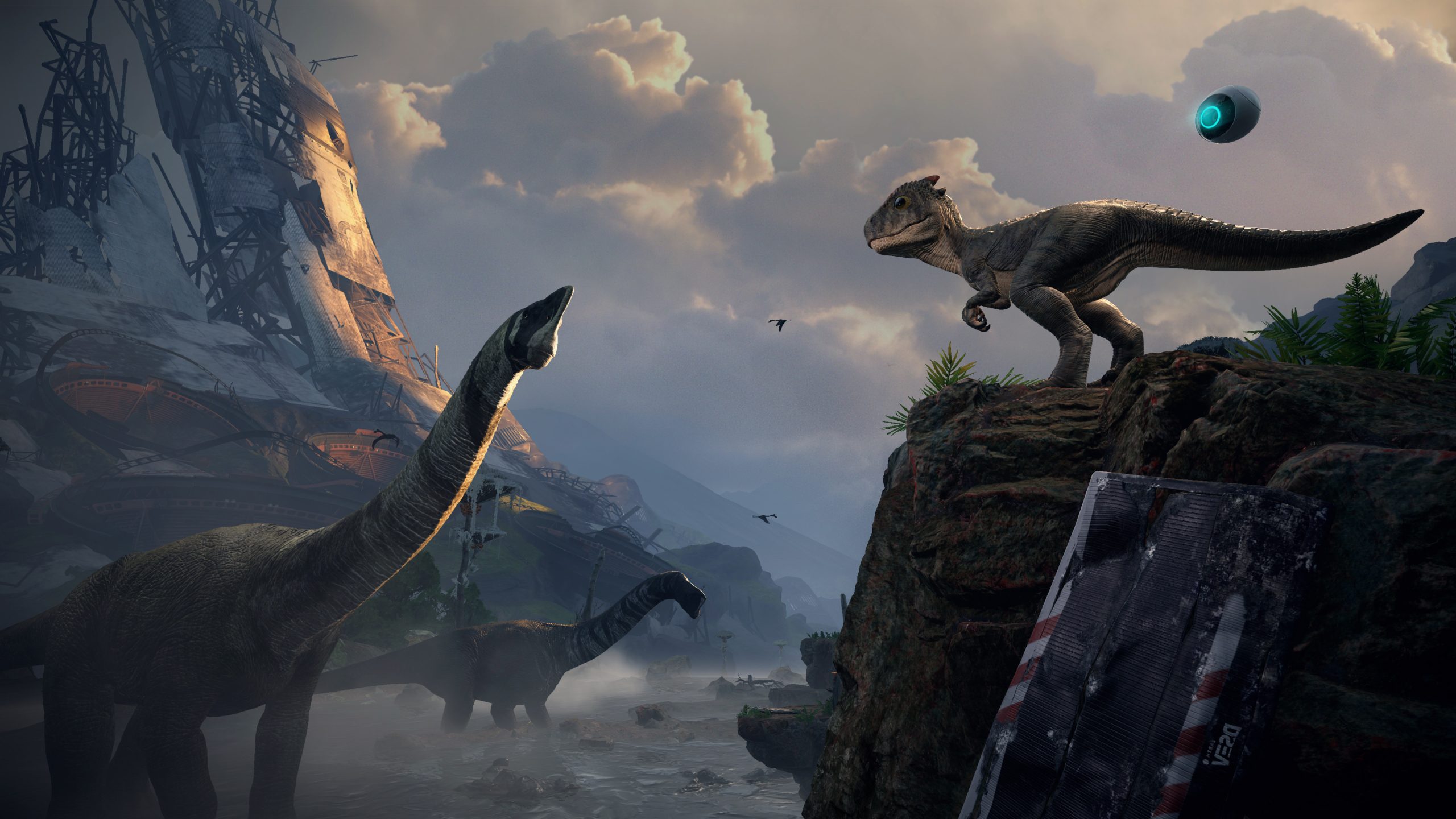

No Comments